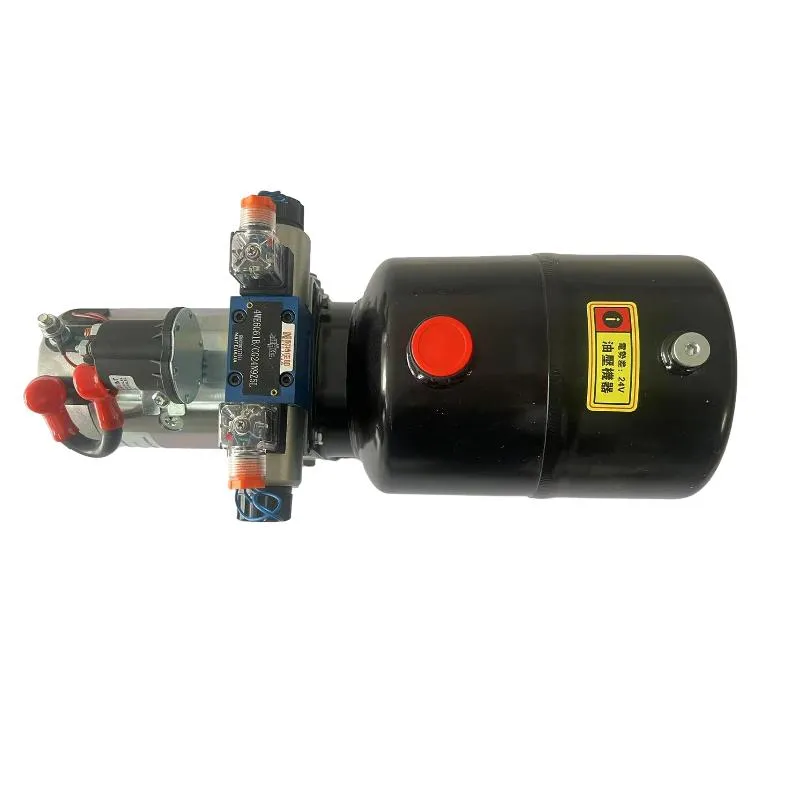Nov . 16, 2024 09:17 Back to list
rotary hydraulic cylinder product
Rotary Hydraulic Cylinder An Essential Component for Modern Machinery
In today's fast-paced industrial landscape, the demand for efficient and reliable machinery has never been higher. At the heart of many mechanical systems lies the rotary hydraulic cylinder, a pivotal device that plays a crucial role in various applications. This article explores the workings, applications, and advantages of rotary hydraulic cylinders, highlighting their significance in modern engineering.
Understanding Rotary Hydraulic Cylinders
At its core, a rotary hydraulic cylinder is a type of actuator that converts hydraulic energy into rotary motion. Unlike traditional linear hydraulic cylinders, which extend and retract in a straight line, rotary hydraulic cylinders facilitate rotational movement. This transformation of energy is achieved through hydraulic fluid, which, when pressurized, moves pistons within the cylinder. The rotational output is then harnessed to perform work, making these cylinders invaluable in several sectors.
Construction and Mechanism
The construction of a rotary hydraulic cylinder typically consists of a cylinder barrel, pistons, hydraulic fluid, and bearing systems. The fluid is contained within the barrel, and as it is pressurized, the pistons rotate around a central axis. This rotation can be modified in speed and torque depending on the specifications of the hydraulic system. The incorporation of seals and bearings allows for smooth operation and minimizes wear, thereby enhancing durability and efficiency.
Applications Across Industries
The versatility of rotary hydraulic cylinders enables their use in a wide range of applications. One of the most prevalent industries utilizing these cylinders is manufacturing, particularly in automation processes. For instance, rotary hydraulic cylinders are employed in CNC machines, ensuring precise cuts and operations. In construction, they are vital for operating heavy machinery such as cranes and excavators, providing the necessary torque to lift and rotate heavy loads safely.
rotary hydraulic cylinder product

In the automotive sector, rotary hydraulic cylinders are crucial for vehicle assembly lines, where they operate robotic arms that assemble various components. Additionally, in the marine industry, they power steering mechanisms and other critical systems on ships and submarines. The agriculture sector also benefits from rotary hydraulic cylinders, enabling efficient tilling, planting, and harvesting through various farm machinery.
Advantages of Rotary Hydraulic Cylinders
One of the primary advantages of rotary hydraulic cylinders is their ability to deliver significant force in a compact form. This efficiency makes them suitable for applications where space is limited yet high torque is required. Additionally, they offer excellent controllability; operators can easily adjust the speed and direction of rotation based on specific operational requirements.
Another benefit is their reliability. Rotary hydraulic cylinders have fewer moving parts compared to traditional machines, which reduces the likelihood of failure. Furthermore, they perform well in challenging environments, including extreme temperatures and harsh conditions, making them ideal for outdoor applications.
Cost-effectiveness is also a notable advantage. While the initial investment might be higher compared to other systems, their longevity and reduced maintenance needs lead to lower operational costs over time. This makes them a wise choice for businesses aiming to improve their bottom line while maintaining productivity.
Conclusion
In conclusion, the rotary hydraulic cylinder is an indispensable component in modern machinery. Its ability to transform hydraulic energy into reliable rotational motion makes it vital across various industries, from manufacturing and construction to automotive and agriculture. With their numerous advantages, including efficiency, controllability, and durability, rotary hydraulic cylinders will continue to play a pivotal role in reshaping industrial processes for years to come. As technology advances, we can anticipate even more innovations in hydraulic systems, further enhancing the capabilities and applications of these remarkable devices.
-
Fork Lift Power Units - Hebei Shenghan | Efficiency, Reliability
NewsJul.13,2025
-
1.5-Ton Turbocharged Cylinder-Hebei Shenghan|Hydraulic Solution,Energy Efficiency
NewsJul.13,2025
-
Auto Hoist Power Units-Hebei Shenghan|Efficiency&Industrial Lifting
NewsJul.13,2025
-
Double Acting Power Units-Hebei Shenghan|Hydraulic Solutions,Industrial Efficiency
NewsJul.13,2025
-
1.5 Ton Lifting Cylinder 70/82-40-290-535 - High-Performance Hydraulic Solution | Hebei Shenghan
NewsJul.13,2025
-
Fork Lift Power Units - Hebei Shenghan | Efficiency&Reliability
NewsJul.13,2025
